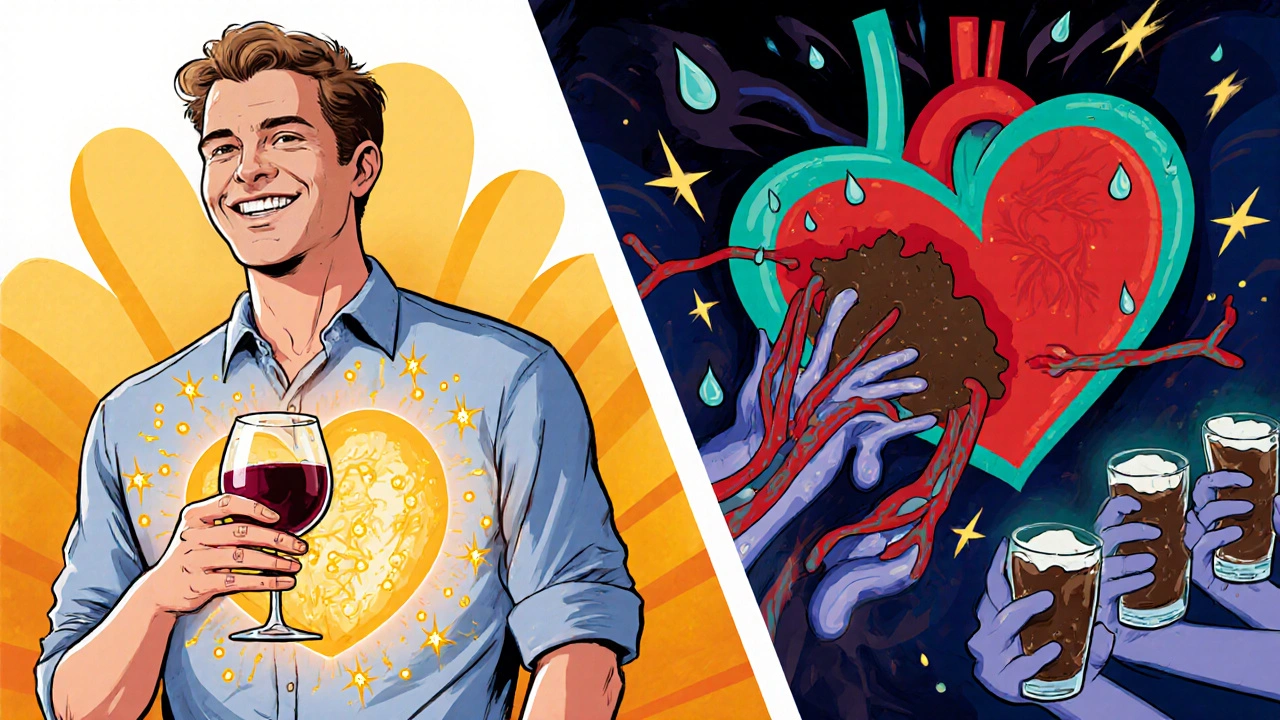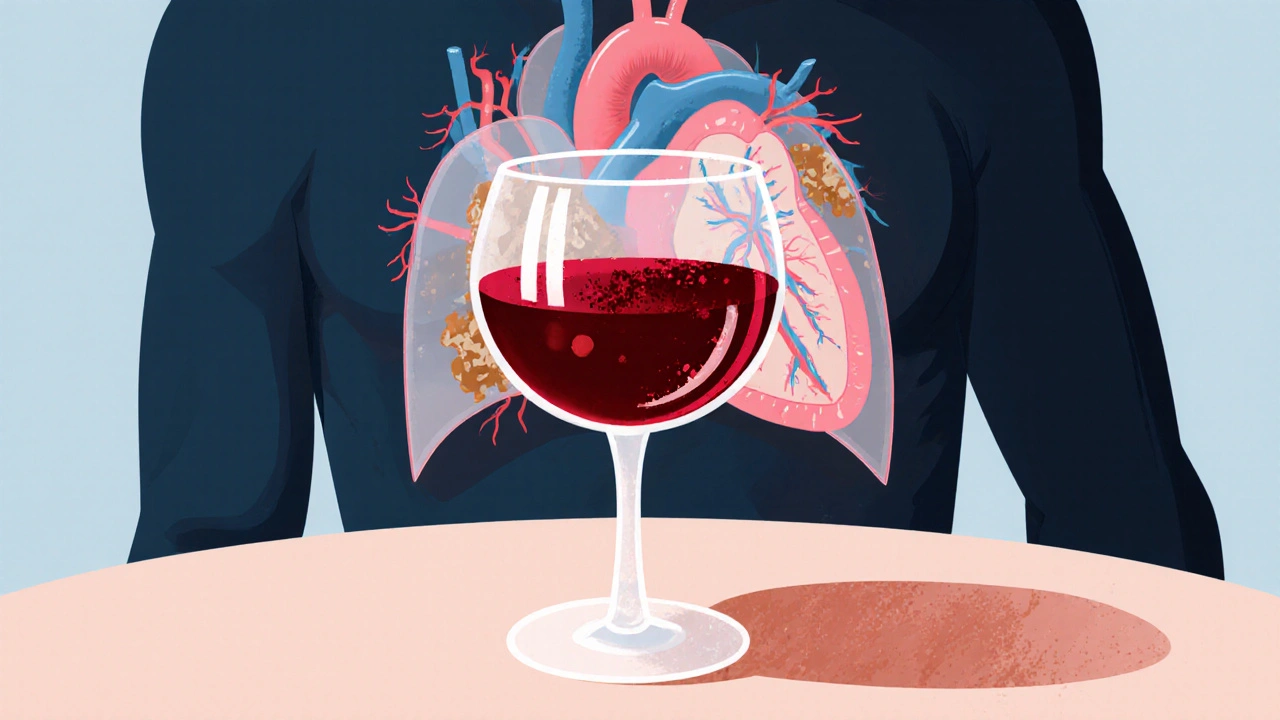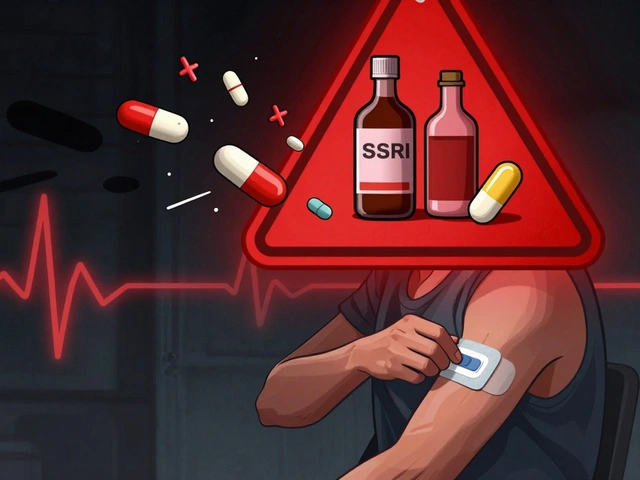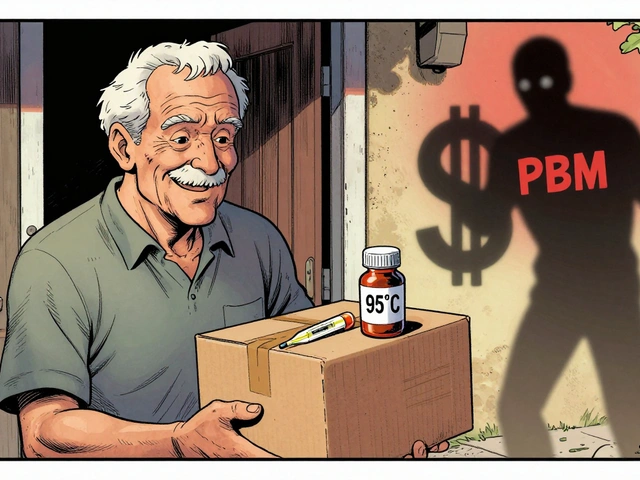Alcohol Risk Calculator
Alcohol Consumption Risk Assessment
This calculator helps you understand how your drinking habits relate to coronary artery disease risk based on scientific research.
Ever wonder why a glass of red wine is praised as heart‑healthy while binge drinking is linked to heart attacks? The answer lies in how alcohol consumption refers to the intake of ethanol‑containing beverages such as beer, wine, and spirits interacts with the arteries that feed your heart.
What is Coronary Artery Disease?
Coronary artery disease is a condition where plaque builds up inside the coronary arteries, narrowing them and restricting blood flow to the heart muscle. Over time, this atherosclerotic process can trigger chest pain, shortness of breath, or a heart attack. Traditional risk factors include high blood pressure, high LDL cholesterol, smoking, diabetes, and a family history of heart disease.
Alcohol’s Direct Effects on the Cardiovascular System
When you sip alcohol, it’s absorbed into the bloodstream within minutes. The liver metabolizes most of it, but the remaining ethanol circulates, influencing several pathways that matter to heart health:
- It can raise levels of HDL cholesterol the "good" cholesterol that helps remove excess plaque from arteries.
- It may lower blood clotting tendency by reducing platelet aggregation.
- Higher doses can raise blood pressure, trigger arrhythmias, and increase triglycerides.
These contrasting actions are why the relationship between alcohol and heart disease isn’t black‑and‑white.
The Sweet Spot: Moderate Drinking
Most research points to a narrow window where alcohol may actually protect against moderate drinking means up to one standard drink per day for women and up to two for men. In this range, several benefits emerge:
- Higher HDL cholesterol: A 10‑gram increase in daily alcohol can boost HDL by about 2‑4 mg/dL, which is associated with a 10‑15 % lower risk of coronary events.
- Improved endothelial function - the inner lining of arteries becomes better at dilating, helping blood flow.
- Reduced inflammatory markers like C‑reactive protein in some studies.
However, "moderate" is not a free pass. The benefit fades quickly if you exceed the recommended amount.

The Dark Side: Heavy and Binge Drinking
When alcohol intake jumps above the moderate threshold, the protective effects evaporate and the risks mount. binge drinking is defined as consuming five or more drinks for men, four or more for women, in a single occasion can trigger a cascade of harmful events:
- Sharp spikes in blood pressure that can damage arterial walls.
- Elevated triglycerides, which accelerate plaque formation.
- Increased risk of atrial fibrillation, a heart rhythm disorder that itself raises stroke risk.
Studies consistently show that heavy drinkers have a 30‑40 % higher risk of coronary artery disease compared with abstainers.
What the Big Studies Say
The Framingham Heart Study is a long‑term cardiovascular cohort that began in 1948 and follows generations of participants in the Boston area found a J‑shaped curve: low‑to‑moderate drinkers enjoyed lower CAD rates, while heavy drinkers fared worse. Similarly, the American Heart Association is a nonprofit organization dedicated to fighting heart disease and stroke issued guidelines in 2023 that endorse moderate alcohol for those who already drink, but advise non‑drinkers not to start for heart‑health reasons.
In a meta‑analysis of 84 prospective studies (over 1.5 million participants), the average relative risk for coronary events was 0.87 for moderate drinkers and 1.31 for heavy drinkers, confirming the J‑shaped trend.
Practical Guidance: How to Balance Enjoyment and Risk
If you enjoy a glass of wine with dinner, here’s a roadmap to keep your heart safe:
- Know your limit: One drink = 12 oz beer, 5 oz wine, or 1.5 oz 80‑proof spirit. Stay at or below this for women, double for men.
- Pick heart‑friendly choices: Red wine offers polyphenols like resveratrol; however, any low‑calorie beverage works if you keep the volume down.
- Pair with a Mediterranean diet emphasizes fruits, vegetables, whole grains, legumes, nuts, olive oil, and moderate wine: The diet’s anti‑inflammatory profile amplifies alcohol’s modest HDL boost.
- Avoid binge patterns: If you’re planning a celebration, spread drinks over several hours and intersperse water.
- Check your health numbers: Regularly monitor blood pressure, triglycerides, and liver enzymes. If any are abnormal, reconsider alcohol.
For people with a history of hypertension, liver disease, or a family predisposition to CAD, even moderate drinking may be risky. In those cases, the safest choice is abstinence.
Comparison of Drinking Levels and CAD Risk
| Pattern | Relative CAD Risk | HDL Impact | Blood Pressure Effect | Triglyceride Change |
|---|---|---|---|---|
| Abstinent | Reference (1.0) | Baseline | Baseline | Baseline |
| Moderate (≤1 drink/day women, ≤2 drinks/day men) | 0.85 - 0.90 | +2‑4 mg/dL HDL | Neutral or slight ↓ | ↔︎ or slight ↑ |
| Heavy/Binge (>3 drinks/day or binge episodes) | 1.30 - 1.45 | No change or ↓ | ↑ (5‑10 mmHg) | ↑ (up to 30 %) |
Notice the sweet spot isn’t a guarantee-it’s a modest reduction that can be wiped out by any binge episode.
Key Takeaways
- Moderate alcohol may raise HDL and lower CAD risk, but only if you stay within recommended limits.
- Heavy or binge drinking spikes blood pressure, triglycerides, and overall heart‑disease risk.
- Personal health status matters: existing hypertension, liver disease, or a strong family CAD history tilt the balance toward abstinence.
- Combine any alcohol you choose with a heart‑healthy lifestyle-think Mediterranean diet, regular exercise, and regular medical check‑ups.
Frequently Asked Questions
Does a glass of red wine really protect the heart?
In moderation, red wine can boost HDL cholesterol and provide antioxidants like resveratrol, which together may lower heart‑attack risk by about 10‑15 %. The benefit disappears if you exceed the recommended daily limit.
Is it safe for a 50‑year‑old with high blood pressure to drink?
Probably not. Alcohol can raise blood pressure, especially at higher amounts. If your systolic pressure is above 140 mmHg, most doctors recommend limiting or avoiding alcohol altogether.
Can I replace a daily beer with a non‑alcoholic alternative and keep the heart benefits?
No. The HDL‑raising effect comes from ethanol itself, not the liquid. Non‑alcoholic drinks won’t give you that specific benefit, though they can still be part of a heart‑healthy diet.
How often should I get my cholesterol checked if I drink regularly?
At least once a year, or more often if you have other risk factors like diabetes or a family history of CAD.
Is there a safe amount of alcohol for teenagers?
No. The teenage brain and cardiovascular system are still developing, and any alcohol intake can increase injury risk and set a pattern for later problems.



Liberty Moneybomb on 18 October 2025, AT 14:24 PM
They don’t want you to know that the “moderate drinking” line is straight out of a corporate playbook designed to keep liquor sales soaring while the public thinks they’re getting a free health boost. Every time a study touts a J‑shaped curve, think about who funds the research, because the big booze lobby has a vested interest in keeping the narrative vague. The so‑called “heart‑healthy” glow of red wine is just a clever marketing veneer that hides the silent damage to arteries hidden behind glossy advertisements. If you look past the headlines, you’ll see a pattern of data cherry‑picking that skirts the reality of increased hypertension risk. Remember, the same agencies that regulate food safety also receive lobbying money from distilleries – a conflict that can’t be ignored.
Stay skeptical, stay safe.